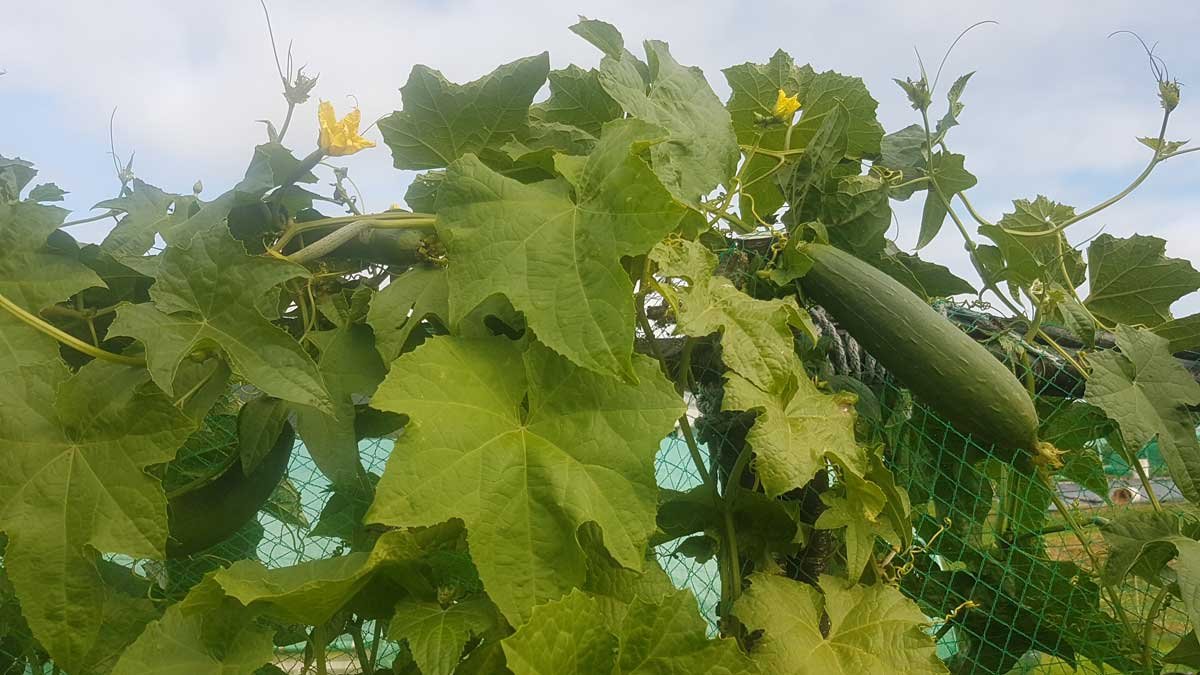Every month, I take a picture of The Outpost from the same position. They get regularly used as hero images on this blog, as well as published on Instagram. If you’ve been looking at one of those photos, you may have been wondering what the structure in front of the greenhouse is.
That’s the luffa (or loofah) garden. We built it from Taiwan cherry branches, and I documented the progress in a Twitter thread.
Part of the business plan for this place involves designing a crop rotation system incorporating several ‘useful’ plants to sell as products. It’s a slow work in progress. Being a crop rotation system, I need to find products from different families of plants. It’s involved a lot of time, research, and (to be completely honest) a whole lot of failure so far.
Luffas fit into the plan as part of the cucurbit family. They are a lot like a cucumber. They grow on vines, need a support frame to climb, and look very similar. I believe you can use immature luffas in a similar way to cucumber in cooking too.
But that’s not why I’ve been growing them. Perhaps you’ve already got a hint from their name, but when mature, luffas can be used as a household or personal sponge.
As a sponge, they are 100% biodegradable. You can use them to wash your dishes (or your body), then at the end of their life, chuck ’em in your worm farm or compost.
In every way, this is the kind of product I want to sell. It’s useful, it’s planet-friendly, I don’t need to use plastic to package them, and I can work it into my crop rotation system to produce them responsibly.
Or, at least, that was the plan.
We built the frame and planted out 24 perfect luffa seedlings in November 2019. The growth progressed nicely, the flowers started appearing, and the vines have never stopped looking good. But they only produced one, single, lonely luffa.
I believe the crop had two problems – firstly, it didn’t get enough water in the drought. The second problem was pests – in particular green vegetable bug who seemed to suck the life out of every immature luffa we managed to get along the way.
Up until 6 weeks ago, I’d completely given up on this crop. But then the ducklings found their way inside the fence and completely stripped all the leaves off the lower meter of the plant. I’m pretty sure they ate a lot of green vegetable bugs while they were there too. And the rain came back – we got 100mm in March.
Between the pruning, the bug eradication, and the increased moisture, the plants have been reinvigorated. They’ve put on a new growth spurt, complete with a couple of dozen quickly-maturing luffas!


Will I have luffas for sale this year? It’s unlikely. But I’ve learned a lot about luffa growth, and with a bit of luck I’ll have enough stock to run tests and collect seeds for next year.
I’m still not sure whether they’ll have enough time to dry on the vine, but I’ll let them keep growing for as long as I can and see what happens. Maybe we won’t have to buy sponges this year, at least.
I’ll just have to try again next season and hopefully, I’ll have them for sale in 2021.


